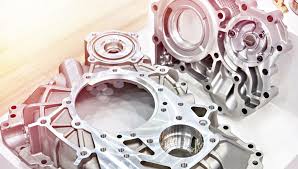Mobile:+86-311-808-126-83
Email:info@ydcastings.com
English
aluminium casting price
Understanding Aluminium Casting Prices Factors and Trends
Aluminium casting has emerged as a vital manufacturing process across various industries, from automotive to aerospace and even consumer products. The price of aluminium casting is influenced by several factors ranging from raw material costs to market demand, production methods, and technological advancements. This article delves into the significant factors that impact aluminium casting prices and the current trends shaping the industry.
Raw Material Costs
One of the primary factors affecting aluminium casting prices is the cost of aluminium itself. Aluminium is derived from bauxite ore, which is subjected to complex extraction and refining processes. Fluctuations in the global market for bauxite and alumina, driven by factors such as mining conditions, geopolitical stability, and production levels of leading producers, directly impact the overall price of aluminium.
When the demand for aluminium rises, perhaps due to increased construction or automotive manufacturing, prices are likely to increase. Conversely, a drop in demand can lead to a decrease in prices, benefiting manufacturers looking to create cost-effective casting solutions.
Casting Methods
The method used in aluminium casting also significantly influences the price. There are various casting techniques, including sand casting, die casting, and investment casting. Each method has unique cost implications associated with the complexity of mould creation, production speed, and the volume of production.
For instance, die casting is generally more expensive upfront due to the high cost of creating dies. However, for large-scale production runs, die casting can provide a lower per-unit cost due to its rapid processing times. On the other hand, sand casting is often more economical for smaller quantities or more complex shapes but may result in higher per-unit costs due to slower production rates.
aluminium casting price

Labor and Manufacturing Costs
Labor costs and manufacturing efficiencies also play critical roles in determining aluminium casting prices. Regions with lower labor costs can produce castings at a lower price point, which may benefit manufacturers looking to cut expenses. However, this does not always guarantee quality; thus, manufacturers must balance cost with the need for maintaining robust production quality.
Furthermore, investments in advanced manufacturing technologies such as automation and efficient melting processes can reduce production times and labor requirements. Manufacturers adopting these technologies may find themselves with competitive pricing, allowing them to attract more clients while maintaining healthy profit margins.
Market Demand and Trends
The global and regional demand for aluminium products significantly affects casting prices. For instance, sectors like electric vehicles (EVs) and renewable energy technologies—such as wind turbines—are experiencing surges in demand for lightweight components, driving up the demand for aluminium castings. This increased demand can naturally lead to higher prices as manufacturers strive to keep pace with orders.
Additionally, the ongoing emphasis on sustainability and recycling in industrial processes cannot be overlooked. Many manufacturers are turning to recycled aluminium for casting, which can offer cost advantages over using virgin materials. Recycling aluminium uses approximately 95% less energy than producing new aluminium from ore. As industries move towards more eco-friendly practices, the demand for recycled aluminium alloys continues to grow, impacting overall casting prices.
Conclusion
In conclusion, the price of aluminium casting is a complex interplay of raw material costs, desired casting methods, labor and manufacturing costs, and market demand dynamics. As industries evolve and adapt to new technologies and sustainability concerns, understanding these factors will be crucial for stakeholders looking to navigate the aluminium casting market effectively. As we move forward, keeping an eye on these elements will provide valuable insight into potential price fluctuations and opportunities for both manufacturers and end-users.











